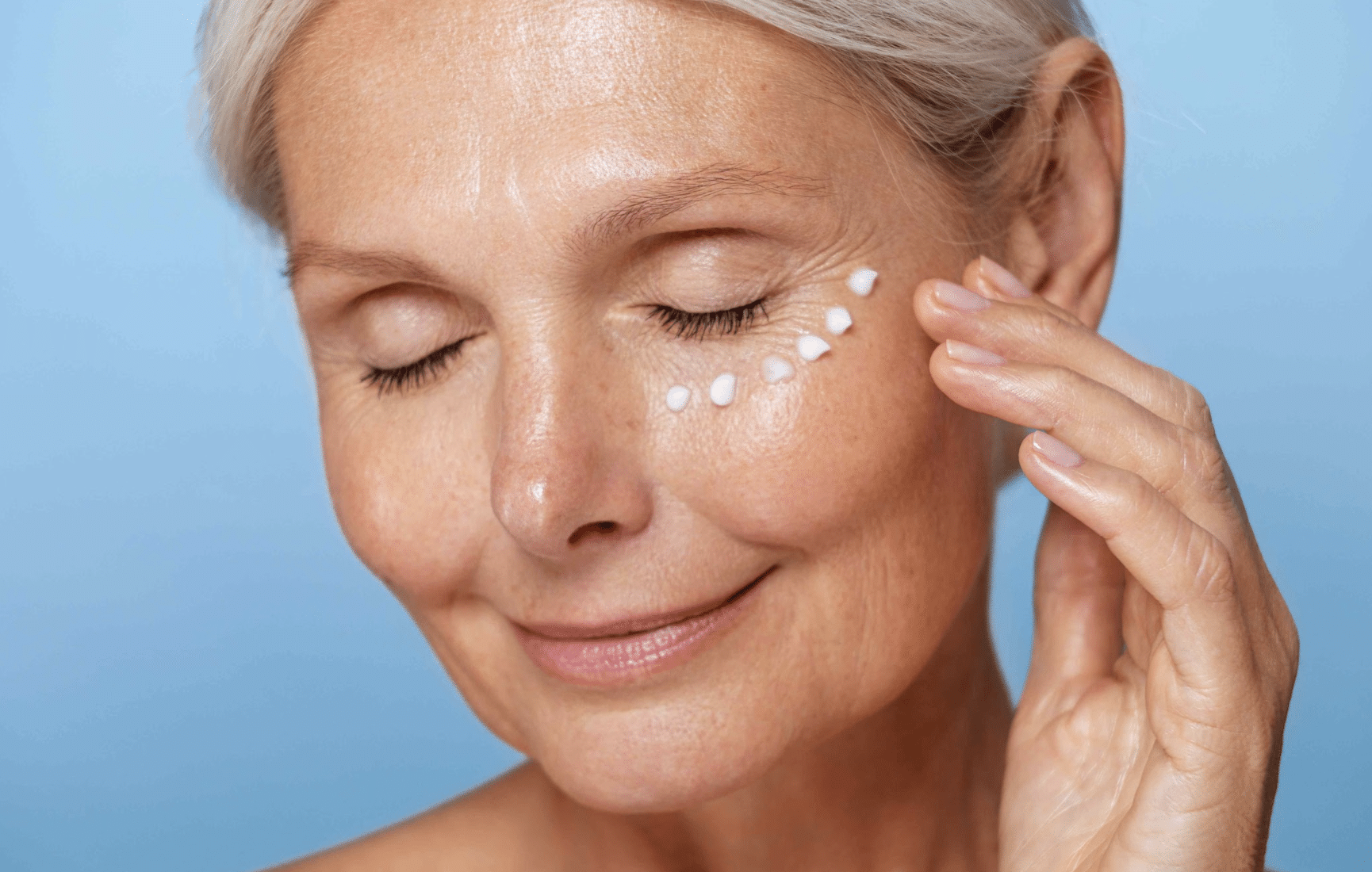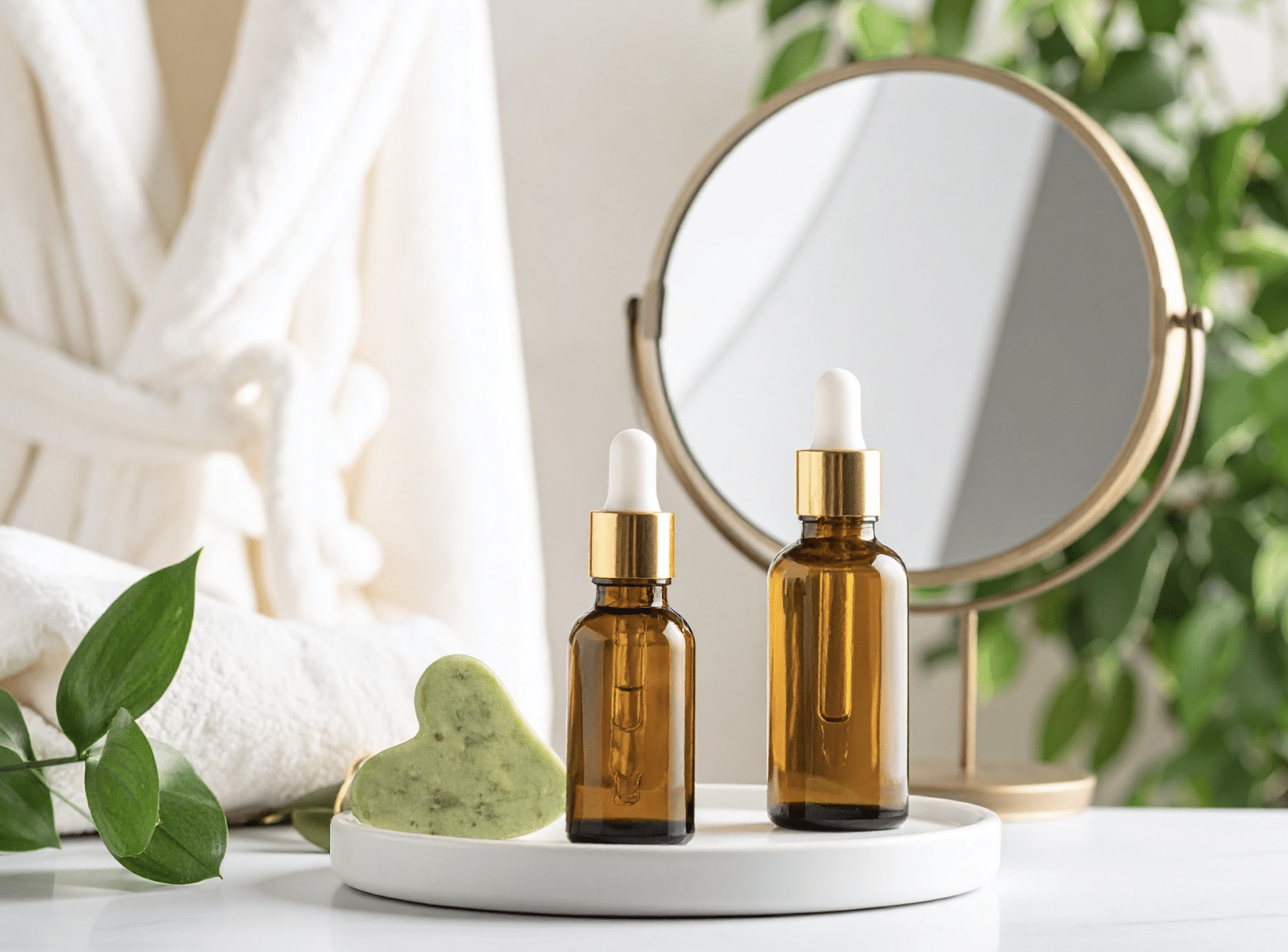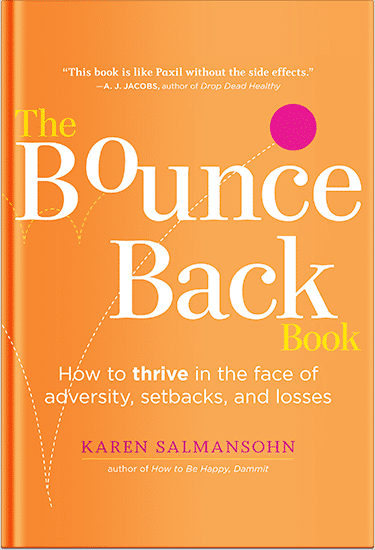 Your skin doesn’t behave the same way it did ten years ago. It might feel drier, look duller, or show lines that didn’t used to be there. That’s normal. Skin changes as you age, and your routine should too.
Your skin doesn’t behave the same way it did ten years ago. It might feel drier, look duller, or show lines that didn’t used to be there. That’s normal. Skin changes as you age, and your routine should too.
What’s great is that it’s simpler than you think.
You don’t need a 12-step ritual to see results. You just need a plan that makes sense for where your skin is now.
This guide walks you through how to build a smart, effective skincare routine that works with aging skin, not against it.
Know What Your Skin Needs
Before picking products, pause and take a good look at how your skin is doing right now. Aging skin often deals with less oil production, more dryness, uneven tone, and slower cell turnover. You might also notice fine lines, dark spots, or a rougher texture.
But not all aging skin looks the same. Some types stay oily, while others become more sensitive. What worked in your thirties may now cause breakouts or irritation. That’s why your first step is to reassess your skin type.
Is it dry, combination, sensitive, or still a little oily? Once you know what you’re working with, you can choose the right tools for the job.
The Core Routine
Let’s start with the basics. Most routines can start with three key products: a cleanser, a moisturizer, and sunscreen.
Cleanser
Use a gentle, non-stripping cleanser. Skip anything with harsh sulfates or drying alcohol. A cream or gel-based cleanser with hydrating ingredients will clean your skin without removing its natural oils. If you wear makeup or sunscreen, consider starting with oil-based cleansers before your main wash to help break everything down.
Some cleansers are labeled as “pH balanced,” but that doesn’t always make them gentle. What matters more is how the formula works with your skin. To avoid dryness or irritation, choose products made for sensitive or aging skin.
Moisturizer
Aging skin craves moisture, so this step matters. Look for ingredients like hyaluronic acid to draw in water, ceramides to support your skin barrier, and peptides to promote firmness.
If your current moisturizer feels heavy, causes irritation, or just isn’t doing much, it’s worth exploring options designed for aging skin. Skimming through a OneSkin Review can offer a firsthand look at how a well-balanced formula supports hydration and comfort while still working well with the rest of your routine.
Sunscreen
Using SPF daily helps shield your skin, even on cloudy days. Go for SPF 30 or higher, broad-spectrum, and apply it every morning. UV exposure plays a major role in visible signs of aging, and sunscreen helps preserve the results of your routine.
Start with these three steps, then layer in extras only if you need them. There’s no need to overcomplicate things.
Add Targeted Treatments
 Once your basics are in place, you can add serums to address concerns like uneven tone, dryness, or texture:
Once your basics are in place, you can add serums to address concerns like uneven tone, dryness, or texture:
- Vitamin C: A well-known antioxidant serum that helps brighten and protect skin.
- Retinol: Supports smoother texture and healthy skin cell turnover, best used at night.
- Niacinamide: A gentle option that may help calm redness and even out tone.
Always introduce treatments one at a time so you can tell what’s working and what’s causing irritation. Be mindful when layering active ingredients. For example, avoid using retinol with exfoliating acids in the same routine. Even a spot treatment can be strong, so apply it carefully and only where needed.
Night vs. Day
Your skin has different needs depending on the time of day. Mornings focus on protection, while evenings support repair and recovery.
- Morning routine: Cleanser, vitamin C serum, moisturizer, and sunscreen. These steps help shield your skin from daily stress.
- Evening routine: Cleanser, retinol or another treatment, followed by a night cream or hydrating moisturizer. This supports overnight repair when your skin is most active.
Nighttime is when cell turnover becomes more active, which makes it an ideal time to apply treatment products. Getting enough sleep is just as important, since your skin reflects your rest as much as your routine.
Lifestyle Choices That Support Your Skin
Skincare isn’t just what you put on your face. What you eat and drink and how you manage stress also play a role.
Drink enough water. Eat antioxidant-rich foods like berries, leafy greens, and nuts. Get movement in every day, even if it’s just a walk. All of this supports your skin from the inside out.
Stress increases cortisol, which can lead to breakouts and dullness. Try to manage it in ways that work for you, such as deep breathing, journaling, short breaks, or screen-free time.
And be gentle with your skin. Over-exfoliating, skipping sunscreen, or trying five new products at once can do more harm than good. Keep it consistent and simple.
Know When to Switch Things Up
Skincare isn’t set in stone. What worked last year might not work now, and that’s completely normal.
If your skin feels tight, looks flaky, or starts breaking out, something might be off. Seasonal changes, hormone shifts, or even travel can affect how your skin behaves. It’s a good idea to reassess and make small changes when needed.
And if you’re feeling overwhelmed or not seeing results, check in with a dermatologist. They can help you understand what’s going on and guide you toward better options.
Wrap Up
Taking care of aging skin doesn’t mean chasing perfection. It’s about making smart choices, staying consistent, and giving your skin time to respond. Start with a simple routine: cleanse, moisturize, and protect. Then add what fits your skin’s needs.
You don’t need shelves full of products. A thoughtful routine with the right basics can go a long way. Pay attention to how your skin feels, adjust when necessary, and stick with what works.
In the long run, steady care makes more of a difference than any quick fix.
P.S. Before you zip off to your next Internet pit stop, check out these 2 game changers below - that could dramatically upscale your life.
1. Check Out My Book On Enjoying A Well-Lived Life: It’s called "Your To Die For Life: How to Maximize Joy and Minimize Regret Before Your Time Runs Out." Think of it as your life’s manual to cranking up the volume on joy, meaning, and connection. Learn more here.
2. Life Review Therapy - What if you could get a clear picture of where you are versus where you want to be, and find out exactly why you’re not there yet? That’s what Life Review Therapy is all about.. If you’re serious about transforming your life, let’s talk. Learn more HERE.
Think happier. Think calmer.
Think about subscribing for free weekly tools here.
No SPAM, ever! Read the Privacy Policy for more information.
One last step!
Please go to your inbox and click the confirmation link we just emailed you so you can start to get your free weekly NotSalmon Happiness Tools! Plus, you’ll immediately receive a chunklette of Karen’s bestselling Bounce Back Book!


 Your skin doesn’t behave the same way it did ten years ago. It might feel drier, look duller, or show lines that didn’t used to be there. That’s normal. Skin changes as you age, and your routine should too.
Your skin doesn’t behave the same way it did ten years ago. It might feel drier, look duller, or show lines that didn’t used to be there. That’s normal. Skin changes as you age, and your routine should too. Once your basics are in place, you can add serums to address concerns like uneven tone, dryness, or texture:
Once your basics are in place, you can add serums to address concerns like uneven tone, dryness, or texture: